Link Roundups feature articles and bits of internet goodness that our dramaturgy team digs up. If you find something you want to send our way, drop us a line on Facebook or Twitter!
♦♦♦♦♦
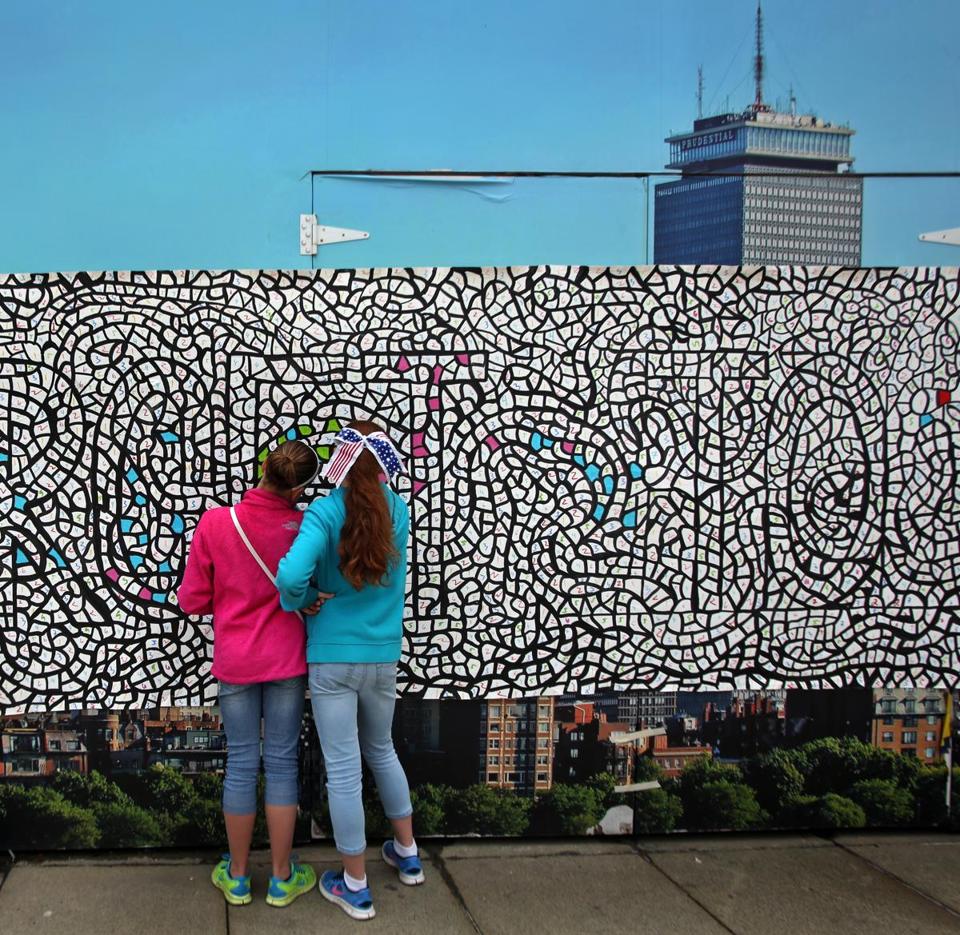
A 60-foot community mural was created outside of the Prudential Center on Memorial Day last year. Photo: Globe file
The Boston Globe recently highlighted some national trends in city development and looked at how arts and culture can be integrated into the development happening in Boston:
More cities have undertaken cultural planning to shape a coherent approach to advancing the arts. Cultural planning looks different in each place, as it should. Yet, when we consider the cities where cultural planning has been most effective, we consistently find an ambitious, inclusive, communitywide effort to develop a shared vision and blueprint for arts and culture — one that prioritizes, coordinates, and aligns public and private resources to strengthen cultural vitality long term.
♦♦♦♦♦
 Create Equity looked at the barriers that prevent people from participating in cultural and artistic activities if they are from lower socioeconomic and educational backgrounds:
Create Equity looked at the barriers that prevent people from participating in cultural and artistic activities if they are from lower socioeconomic and educational backgrounds:
Data from the survey shows that fewer low-income individuals attend pop and rock concerts than their wealthier counterparts, and significantly fewer of them attend visual arts festivals and craft fairs. In fact, people with lower incomes and less education are less likely to read books, go to the movies, take an arts class, play a musical instrument, sing, dance socially, take or edit photographs, paint, make scrapbooks, engage in creative writing, or make crafts. All told, the data paints a consistent portrait of lower participation by low-SES adults in a breathtaking range of visual, performing, literary, and film activities…When large numbers of people face barriers to participating in the arts in the way they might want to, we know that we’re missing opportunities to improve people’s lives in concrete and meaningful ways.
Continue reading →
Link Roundups feature articles and bits of internet goodness that our dramaturgy team digs up. If you find something you want to send our way, drop us a line on Facebook or Twitter!
♦♦♦♦♦
In the most recent post on Bitter Gertrude, Melissa Hillman examines the negative online reactions that the photo below received and how it highlights the importance of engaging with young audiences on their own terms:
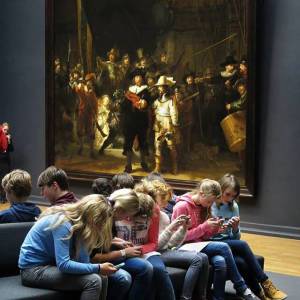
Photo by Alvaro Garnero
We talk a lot about wanting to engage the rising generation in theatre, and I’m seeing a lot of “what can we do about this?” commentary on this picture. Listen: If you want to engage the rising generation, the first thing you need to do is stop lying to yourself about them. You’ll fail to engage them if you don’t approach them with honesty…This is exactly why 99.999% of “audience engagement strategies” fail miserably to bring in young, diverse audiences. This is why “tweet seats” failed. We’re not looking at this generation honestly. Instead we look at studies designed from the outset to confirm our hypotheses. We make assumptions about how the rising generation thinks and feels based on how they make us think and feel. We refuse to engage them on their own terms, instead dictating the terms to them and then blaming them for boorishness when they fail to meet them.
♦♦♦♦♦
Seth Lepore’s HowlRound essay about the importance of entrepreneurship and the blind many college theatre programs have about it has been getting lots of online buzz this week:
The blind spot of most college professors needs to be understood for what it is. A lot of college teachers who are tenure track have been in school their whole lives. Creating their own work has been in the context of academia and the relationship to both process and theory. Practitioners in the academy always have a place to rehearse and develop new work. They don’t have to worry whether people attend the performance and if it will break even or not. When showing a new work, they are part of an infrastructure that already subsidizes them. The business skill set doesn’t seem to fit into “What Would Artaud Do?” They are focused on students building a performance skill set. I’ve actually heard some of these well-meaning professors say “If they want that information, they can take a course with the business school.”
Continue reading →
Staff Chat posts feature articles and news that the C1 team discusses as part of our weekly all-staff meeting. We’d love to hear your thoughts too — hit us up on Facebook or Twitter!
♦♦♦♦♦
This week’s Staff Chat will focus on the conversation around the play This is Modern Art (Based on True Events), a Steppenwolf for Young Adults production co-written by Idris Goodwin and Kevin Coval. We’re looking at two reviews of the play and a few articles that examine the critical reception of the piece:

Kelly O’Sullivan (from left), J. Salome Martinez Jr., Jerry MacKinnon and Jessie D. Prez in the Steppenwolf Young Adults production of “This Is Modern Art.” (Photo: Michael Courier)
The play, inspired by a real incident, follows a group of Chicago teens who decide to cover the Art Institute of Chicago’s Modern Wing in graffiti art. In their reviews, critics Jones and Weiss briefly touch on the artistic aspects of the play (which they seem to praise), but spend most of their columns taking the show to task for its portrayal of graffiti artists. From Jones:
But here is what “This is Modern Art” barely even mentions: Graffiti comes at a price. It can be invasive, self-important and disrespectful of the property of others — and plenty of struggling folks have had to clean graffiti off something they own or love. Graffiti can be inartful, for goodness sake. More importantly yet, graffiti had the effect of making people feel unsafe in the city. It terrified people. It was only when public officials declared themselves determined to wipe it out that cities finally came back to life, with broad benefits.
You wanna go back to riding public transportation in New York or Chicago in the 1980s? I do not. You do not have to be conservative or somehow not down with youth to think it reprehensible that these issues do not have a place in a show for schools that is quite staggeringly one-sided.
Weiss continues this line of thought in her review, though she takes it even further, stating:
This play is a wildly wrong-headed and potentially damaging work — one that fails to call “vandalism” by its name, and rationalizes and attempts to justify that vandalism in the most irresponsible ways. It also trades in all the destructive, sanctimonious talk about minority teens invariably being shut out of opportunities and earmarked for prison in a way that only reinforces stereotypes and negative destinies. Counterproductive in the extreme, it deepens and solidifies racial and class divisions and a sense of hopelessness among those who need to dwell on possibility.
Continue reading →
Link Roundups feature articles and bits of internet goodness that our dramaturgy team digs up. If you find something you want to send our way, drop us a line on Facebook or Twitter!
♦♦♦♦♦
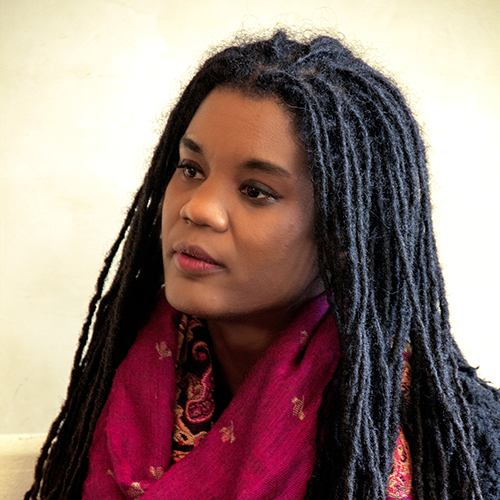
Playwright Chisa Hutchinson, who recently received a Dramatist Guild award for early career playwriting, has an interview on The Interval about the development of her work and the representation of women and non-white writing in the theatre:
Q: How do you think theater can better address race?
A: To give room to everyone. It’s hard for me to listen to people who literally cannot imagine the experiences of other people and therefore dismiss those experiences like, “No, of course that doesn’t happen. This is post-racial America.” Can we just make room for other experiences? Or just acknowledge that there are experiences different than yours?
♦♦♦♦♦
It’s Native voices week on HowlRound and the site is featuring essays from various Native American artists, including this thoughtful piece by Larissa FastHorse:
Do white playwrights ever think about this? Do they worry about losing jobs for white actors? Do they question if they are writing about enough white issues? Are they expected to be the voice of all white people even when they are just speaking for themselves? Do they fear their play about a girl who wants to be a ballet dancer is responsible for the genocide of their race?
Continue reading →
Link Roundups feature articles and bits of internet goodness that our dramaturgy team digs up. If you find something you want to send our way, drop us a line on Facebook or Twitter!
♦♦♦♦♦
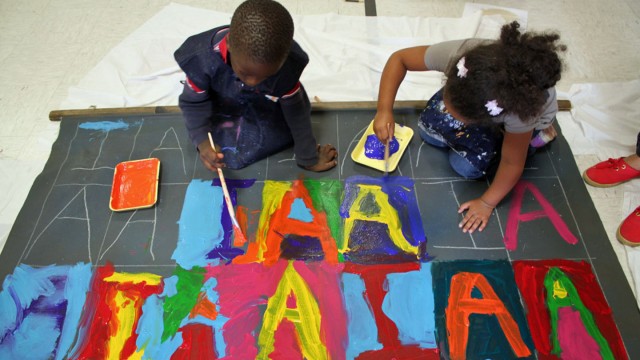
Kindergartners at Wheeler paint the backdrop for their school photos. (Courtesy of Ada Leaphart/Integrated Arts Academy at H.O. Wheeler)
This piece about the Integrated Arts Academy in Vermont combining the arts with math, science, social studies and other curriculum really highlights the importance of creativity in the classroom:
What does art integration look like? Recently, a fourth-grade lesson on geometry examined the work of the famous Russian artist Wassily Kandinsky. The class talked about his work and then created their own art using angles in the style of Kandinsky. Students had to be able to identify the angles they’d used and point them out in their art.
“Higher analytical thinking and reasoning and student voice fit so well with the arts,” said Bobby Riley, the school’s principal. Teachers are seeing ways to make connections between subjects and watch as students find creative confidence and voice in their expression.
♦♦♦♦♦
The Boston Globe has an interview with Julie Burros, the new arts and culture chief, about her plans for Boston and what she’s learned about the city’s cultural scene since taking office:
On the relationship between the arts and income inequality, I’m curious to know: Can you use arts and culture to address that growing problem?
Maximizing people’s creative capital could help create income opportunities for people who maybe don’t see themselves fitting into the four-year college track or the corporate world. There’s another relationship in, how can unlocking people’s creative tools help them be more employable, more well-rounded employees for all different kinds of industries? And then there’s just the appeal factor. If we have more robust arts and culture offerings in our schools, it could keep kids in school longer.
Continue reading →
Link Roundups feature articles and bits of internet goodness that our dramaturgy team digs up. If you find something you want to send our way, drop us a line on Facebook or Twitter!
♦♦♦♦♦
Three new reports from the NEA were recently released and explore the relationship between arts and the economy and detail how audiences attend and participate in the arts. Check them out, data nerds!
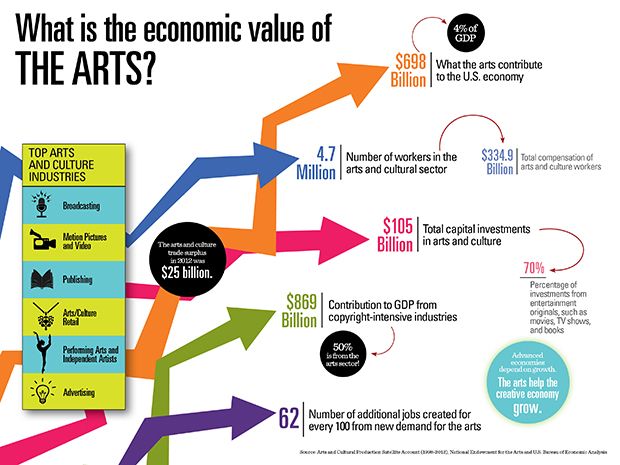
♦♦♦♦♦
Everyday Feminism has a great post about what intersectionality means and why it’s so important. It’s a great tool for anyone wondering how to explain inclusive feminism and apply it day-to-day.
It makes sense in many ways that those of us with identity privilege would have a harder time including in our feminism those who are oppressed. Privilege conceals itself from those who have it, and it’s a lot easier to focus on the ways that we are marginalized or oppressed.
But without an intersectional lens, our movements cannot be truly anti-oppressive because it is not, in fact, possible to tease apart the oppressions that people are experiencing. Racism for women of color cannot be separated from their gendered oppression. A Trans person with a disability cannot choose which part of their identity is most in need of liberation.
Yet there is regularly confusion about what intersectionality really is.

Continue reading →
Since we produced the three plays in the DISPLACED HINDU GODS TRILOGY in two spaces in the BCA Plaza Theatre, we were able to fully transform the lobby into a fun, interactive, informative space.
- – Video stations with clips that tell the stories of intersex individuals
- – Re-mythologized shrines
- – Cosmic audience response board with the following questions:
- BRAHMAN/I: What stories helped shape your identity, or gave you insight into who you are?
- KALKI: What happened when you stepped out of the circle of protection?
- SHIV: What have you had to destroy or leave behind in order to move forward?
- TRILOGY: What else do you want to tell us?
- – Modernist Indian (magnetic) poetry board
- – Contextual video wall
Check out the photo album from opening night to see audience members and the creative team exploring and celebrating in the lobby!
-
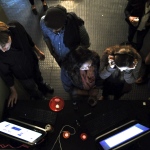
-
Video stations
-
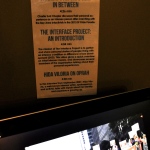
-
Video stations
-
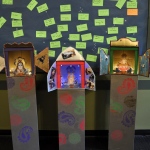
-
Re-mythologized shrines
-

-
Modernist Indian magnetic poetry
-
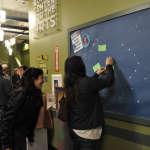
-
Audience response bulletin board
-
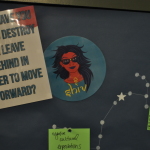
-
SHIV prompt
-
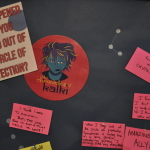
-
KALKI prompt
-
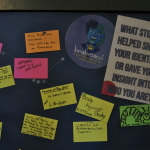
-
BRAHMAN/I prompt
-
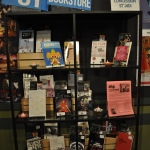
-
Bookstore
In this article, Melissa Hillman states the difference between traditionally immersive versus interactive theatre, and she explains the negative effects of forcing audience members to participate in theatre. Read her post here.
Nicholas Powers recounts his visit to the Kara Walker exhibit at the old Domino Sugar Factory in Brooklyn, NY. His outburst had to do with how visitors treated the artwork featured at the exhibit and his anger at the lack of curation or education regarding the artwork. Read his account here.
Here’s an interview with Kara Walker regarding the exhibit.
Here’s an interview about the “We Are Here” event that took place at the Domino Sugar Factory.
This is an interview featuring Robert Shelton, a man who worked at the Domino Sugar Factory for 20 years and chose to volunteer at the exhibit.
This article from Arts Professional, a UK magazine, explains how live streaming theatrical performances creates new opportunities in areas such as audience engagement, marketing, fundraising, education and brand awareness. Read the article here.

 Create Equity looked at the barriers that prevent people from participating in cultural and artistic activities if they are from lower socioeconomic and educational backgrounds:
Create Equity looked at the barriers that prevent people from participating in cultural and artistic activities if they are from lower socioeconomic and educational backgrounds:













